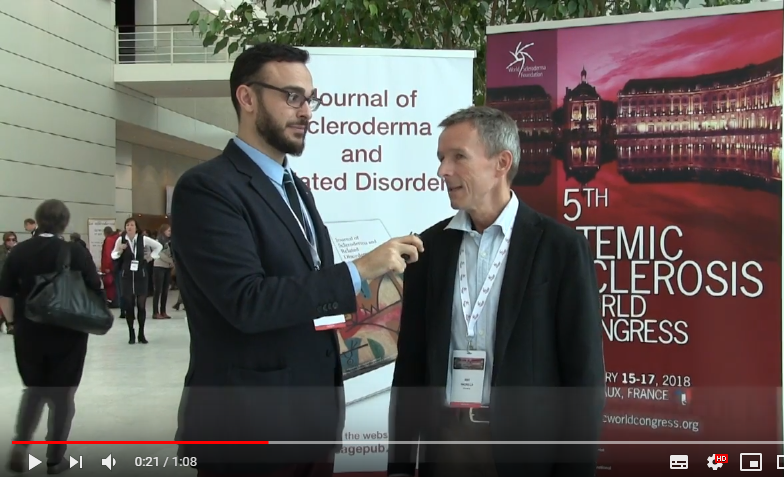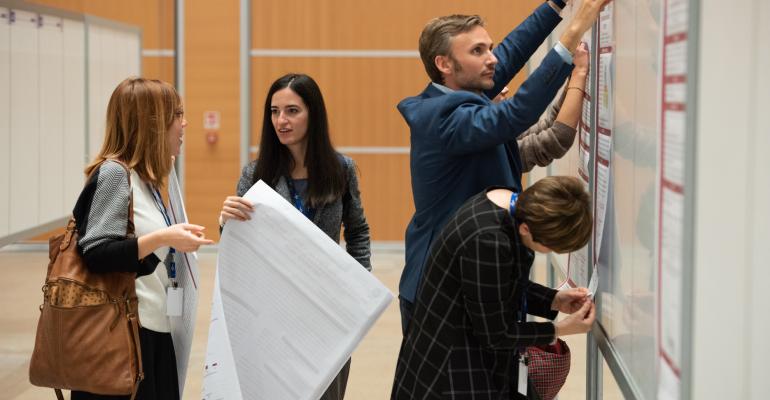It goes without saying that one of the primary objectives of scientific and medical associations is to increase membership. And with the healthcare industry changing significantly due to technology, regulation, and other factors, the future for medical societies lies heavily with the younger generations.
Seeing that meetings and events are the most dynamic offering that medical societies possess, that's where the strongest impressions can be made on young HCPs. While remote learning is only going to become more prevalent in the field of medicine, in-person events provide opportunities that simply cannot be matched by video-based programming—and that needs to be made clear to young HCPs.
To help with this, professional congress organizer and association management services provider AIM Group International has chronicled the strategies and tactics it sees working well at the medical and pharmaceutical events it coordinates. Here are four interesting practices AIM says are resonating with the younger crowd—practices which can give not just medical associations, but also pharmaceutical companies and device makers, the best chance to maintain strong long-term connections with HCPs, including healthy attendance at their events year after year.
1. Bring them on board. One effective way to involve young physicians in the life of an association is to grant them access to the decision-making levels. For instance, the Italian Society of General Practitioners (SIMG) created a “parallel young board” a few years back to meet alongside the executive board. And each year, the young board nominates one of its own to join the executive board. Partly because of that influence, the 2018 SIMG Congress held in early December in Florence focused more strongly on the needs of younger practitioners; specifically, dedicated practical courses and discounted rates were offered to HCPs not yet 35 years old. The result: For the first time ever, the number of under-35 delegates represented more than 50 percent of the event's more than 2,800 participants.
2. Develop social ambassadors and communication multipliers. Even though social-media networks have only been popular for about 10 years, most young HCPs don't remember a time in their lives when there was no Internet. They are technological natives, and their professional habits and activities are going to reflect that. As a result, the Italian Society of Hospital Pharmacy (SIFO) created a "Young HCP Area" for under-35 members at its 1,700-person national congress in October in Naples. Among other purposes, the area was used by show organizers to actively promote young attendees' sharing of their observations, lessons, and other thoughts as well as their show-floor photos across Twitter, Instagram, LinkedIn, and Facebook, to engage even non-attendees. And at the World Scleroderma Foundation's Systemic Sclerosis World Congress in Bordeaux, France, in March 2018, young physicians conducted a series of video interviews with senior experts on important topics and posted the videos to the association's YouTube channel. These segments serve not only as learning opportunities for all members but also as examples of young practitioners being able to interact with the field's most influential people.

Video interview at World Scleroderma Foundation's 2018 annual congress
3. Deliver dedicated sessions and networking avenues. Young HCPs have some specific needs that differ from veteran HCPs, and they benefit from sharing their concerns and experiences among each other in settings where they feel at ease. Associations that successfully develop these attendees' sense of belonging will build affinity among them that can last throughout their careers. One association making such an effort is the Italian Society of Rheumatology (SIR). At its 1,500-attendee annual congress held in Rimini in late November, 60 percent of the speakers were under the age of 40. What's more, a “SIR Young Evening” was organized in conjunction with young members of the Association of Rheumatic Sufferers; this engagement between physicians and patients was valuable and very well received. And at some shows both within and outside the medical field, young members who live in the event's destination are asked to host small dinners in their homes for other young attendees. Such experiences are memorable to participants and beneficial to the association's brand.
It is also useful to explore opportunities that leverage young HCPs' desire to converse with experienced practictioners rather than simply sit in lecture sessions led by them. At the European Association of Cardiovascular Imaging's annual meeting, “speed mentoring” takes place in a dedicated lounge where young doctors can book 15-minute chats with senior experts on particular topics. And at the annual congress of the European Association of Neurosurgical Societies, there is a series of "master classes" where senior experts are available to small groups for Q&A.
4. Recognize achievement. Providing industry-wide visibility to young doctors for their work is motivating not only to those being recognized, but to their young peers as well. Citing the best research, presentations, or abstracts of practitioners under age 40 is becoming more common, according to AIM; in fact, one incentive that's gaining popularity is to reward exceptional young HCP researchers/authors by inviting them to the North American, European, or world congress for a particular field. For instance, the societies of rheumatology in several countries provide grants to young HCPs with outstanding abstracts so they can participate in the European Congress of Rheumatology.
From a wider perspective, the use of financial grants is increasing within associations for purposes of sparking long-term interest among young HCPs to attend in-person events. That's because “the generational turnover among congress participants is already under way, and will become very evident in the next four or five years,” says Rosangela Quieti, managing director, Congress Division, for AIM Group International. “Each association must find the best initiatives to engage and attract young participants" through educational, relationship-building, and financial offerings.





